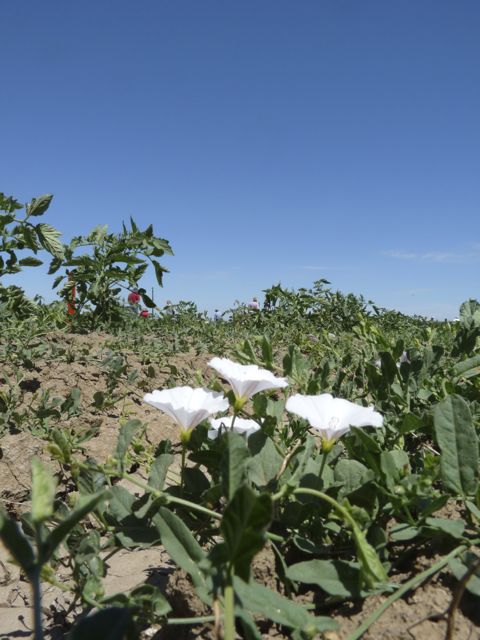USDA to Help Farmers Diversify Weed Control Efforts
USDA Addresses Herbicide Resistant Weed Control
Edited by California Ag Today
Agriculture Secretary Tom Vilsack announced TODAY the U.S. Department of Agriculture (USDA) is taking steps to address the increase of herbicide resistant weeds in the country’s agricultural systems.
In California, glyphosate resistant weeds are found throughout the state, and growers are warned to minimize using the material back-to-back during weed control. More information can be found http://info.ucanr.org/weed_sept/.
“Weed control in major crops is almost entirely accomplished with herbicides today,” said Vilsack. “USDA, working in collaboration with the Environmental Protection Agency, must continue to identify ways to encourage producers to adopt diverse tactics for weed management in addition to herbicide control. The actions we are taking today are part of this effort.”
To help farmers manage their herbicide-resistant weeds more holistically and sustainably:
- USDA’s Natural Resource Conservation Service (NRCS) will offer financial assistance under its Environmental Quality Incentives Program (EQIP) for herbicide resistant weed control practices that utilize Integrated Pest Management plans and practices.
- Later this year NRCS will be soliciting proposals under the Conservation Innovation Grants (CIG) Program for innovative conservation systems that address herbicide resistant weeds.
- USDA’s Animal and Plant Health Inspection Service (APHIS) will actively promote use of best management practices (BMPs) in design protocols for regulated authorized releases of genetically engineered (GE) crops and will include recommendations for BMPs with the authorization of field trials of HR crops.
- USDA is partnering with the Weed Science Society of America (WSSA) and is providing funds to develop education and outreach materials for various stakeholders on managing herbicide resistant weeds. The Secretary has directed Dr. Sheryl Kunickis, Director of the USDA Office of Pest Management Policy, as the point person leading this effort with the USDA.
USDA works with the EPA
The issue of herbicide resistant weeds has become one of increasing importance for agriculture. When herbicides are repeatedly used to control weeds, the weeds that survive herbicide treatment can multiply and spread.
With EPA’s announcement TODAY on the registration of new uses for herbicide mixtures containing the herbicides 2,4-D and glyphosate (in the Enlist® formulation) in conjunction with new genetically-engineered crop varieties, farmers have more tools for improved management of emerging populations of herbicide-resistant weeds in corn and soybeans crops. In its decision for 2,4-D use on genetically modified corn and soybean, EPA has outlined new requirements for registrants as part of a product stewardship program.
The USDA Office of Pest Management Policy worked with EPA to address the issue of herbicide resistance through appropriate label language that will require registrants to develop a stewardship program for the herbicide, develop training and education on proper use of the product that includes diversifying weed management, investigate and report nonperformance, and develop and implement a remediation plan for suspected herbicide resistant weeds.
EPA intends to require the same stewardship plans for all new applications for product registration on genetically modified crops with the goal being to encourage effective resistance management while maintaining needed flexibility for growers.
USDA recognizes that the problem of herbicide resistant weed control will not be solved solely through the application of new herbicides. USDA has worked with the Weed Science Society of America for a number of years on identifying best management practices for farmers and on addressing impediments to adoption of those practices.
USDA will continue to work to ensure that growers have the diverse tools they need to address the management of herbicide resistant weeds.
Sources: USDA, CDFA











